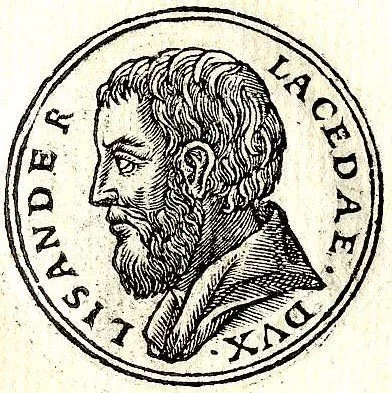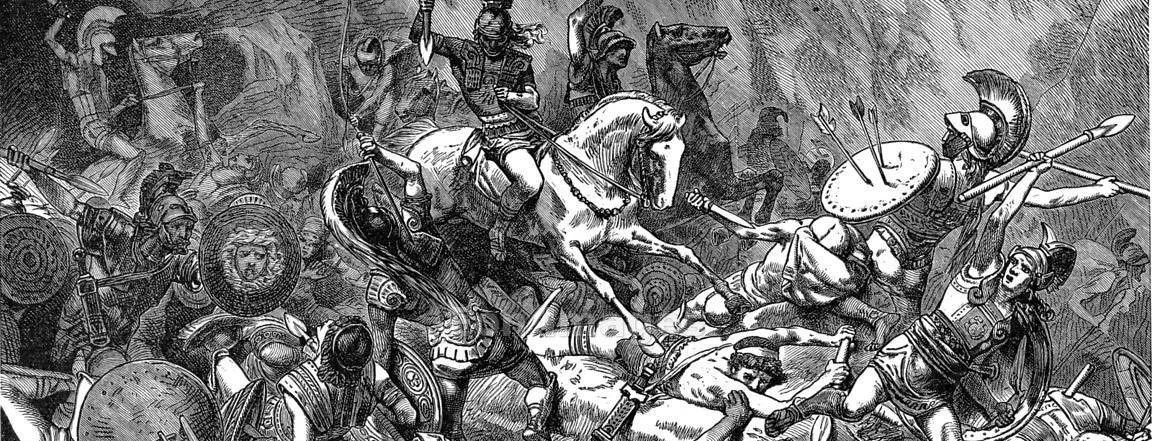Peloponnesian War reshaped the ancient Greek world. It was fought in 5th century BC between the democratic Athens and the Peloponnesian League led by oligarchic Sparta. Lasting for more than a quarter of a century, it marked the end of the golden age of Greece. Here are 10 interesting facts about the causes, outcome, effects and history of this historic ancient Greek war.
#1 ATHENIAN EMPIRE WAS AT ITS HEIGHT JUST BEFORE It
In 478 BC, Greek city-states numbering from 150 to 173 combined together under the leadership of Athens to fight the Persian Empire. It is called the Delian League because its official meeting place was the island of Delos. The Persian Invasion was defeated. However Athens started to dominate other city-states and started expanding the Athenian Empire. It conquered all of Greece apart from Sparta and its allies. After fifteen year war between Athens and the Peloponnesian states, the Thirty Years’ Peace treaty was signed in 445 BC.

#2 Its Major Cause WAS THE BATTLE OF SYBOTA
Spartan ally Corinth was defeated by its colony Corcyra, a neutral state which was a sea power. When Corinth started building an allied naval force against Corcyra, Athens entered into a defensive alliance with Corcyra at their request. Athenian warships then participated in the Battle of Sybota against the Corinthian fleet, thus disregarding the Thirty Years’ Peace treaty. Also Athens passed a decree which forbid Spartan ally Megara to trade with the prosperous Athenian empire.
#3 IT BEGAN WITH A VOTE AGAINST ATHENS AT THE SPARTAN ASSEMBLY
In 432 BC members of the Peloponnesian League, especially those who were troubled by Athens, gathered together at the Spartan assembly. A delegation from Athens was also invited. There was heated debate between Corinthians and Athenians. Corinthians warned Sparta that if it continued to remain passive it will lose its allies and position; while Athenians reminded Sparta of its might. A majority of the Spartan assembly voted against Athens thus effectively declaring war.

#4 THE FIRST PHASE OF THE WAR IS NAMED AFTER SPARTAN KING ARCHIDAMUS II
The first phase of Peloponnesian War, which is known as the Archidamian War after Sparta’s king Archidamus II, lasted from 431 BC to 421 BC. City-states in the Peloponnesian League, except Corinth, were land-based powers with large nearly unbeatable armies while the Athenian Empire relied on its fleet which was the most powerful in Greece. They maintained their supremacy in their domains and were unable to win any decisive battles.
#5 ARCHIDAMIAN WAR WAS BROUGHT TO AN END THE TREATY KNOWN AS PEACE OF NICIAS
Athens was able to capture 300 to 400 Spartan soldiers after winning the Battle of Sphacteria while Sparta captured the Athenian colony Amphipolis on which Athens relied heavily for funds. Athenian attempt to regain Amphipolis was unsuccessful as Sparta defeated them at the Battle of Amphipolis in 422 BC. The Spartans and Athenians agreed to exchange the hostages for the territory and signed the Peace of Nicias which lasted for 6 years.

#6 THE BATTLE OF MANTINEA WAS ITS LARGEST LAND BATTLE
Argos, a powerful state, managed to form a coalition of democratic states within the Peloponnese. Supported by a small Athenian force, they moved to capture the city of Tegea, near Sparta. This led to the Battle of Mantinea in 418 BC which was the largest land battle of the Peloponnesian War. Sparta and its allies completely defeated forces led by Argos and Athens thus breaking the democratic alliance and re-establishing its dominance in the Peloponnese.
#7 SICILIAN EXPEDITION WAS A DISASTER FOR ATHENS
In 415 BC, Athens sent a massive expeditionary force to Sicily when one of its allies was attacked by Syracuse, the most powerful state in the region. The Peloponnesian League kept sending reinforcements to Sicily. The mighty Athenian expedition was thoroughly defeated and their entire force was killed or enslaved. Such was the magnitude of Athenian loss in the Sicilian Expedition that it was widely believed that Athenian Empire was defeated for good.

#8 ATHENS WAS ABLE TO RECOVER TO SOME EXTENT AFTER THE BATTLE OF CYZICUS
At the start of the war, Athens had put aside 100 ships and a bit of money which was to be used as the last resort. These ships served as the Athenian fleet for the rest of the war. At the Battle of Cyzicus in 410 BC, Athenian fleet completely destroyed the Spartan fleet and this allowed Athens to re-establish the financial basis of the Athenian Empire. Between 410 and 406, Athens won a continuous string of victories and was able to recover large portions of its empire.

#9 ITS LAST MAJOR BATTLE WAS THE BATTLE OF AEGOSPOTAMI
The last phase of the Peloponnesian War is known as the Decelean War, or the Ionian War. In it Sparta, led by the skillful general Lysander, gathered support from Persia and supported rebellions in Athens’ subject states in the Aegean Sea and Ionia. In 405 BC at the Battle of Aegospotami, Spartan fleet under Lysander completely destroyed the Athenian navy. This was the last major battle of the Peloponnesian War. Athens surrendered in 404 BC and its allies followed soon.

#10 SPARTA REPLACED ATHENS AS THE DOMINANT POWER IN GREECE
After surrender, Athens was stripped of its walls, fleet and all of its overseas possessions. Corinth and Thebes demanded that Athens should be destroyed and all its citizens should be enslaved. But Sparta refused as they believed Athens had done good service to Greece in its time of great danger. Athens, which was at its greatest heights and the strongest city-state in entire Greece before the Peloponnesian War, was left completely devastated and never gained its pre-war prosperity while Sparta became the leading power of Greece.


Very useful for my history homework in history 6th grade thx for making this webpage
Happy to help.